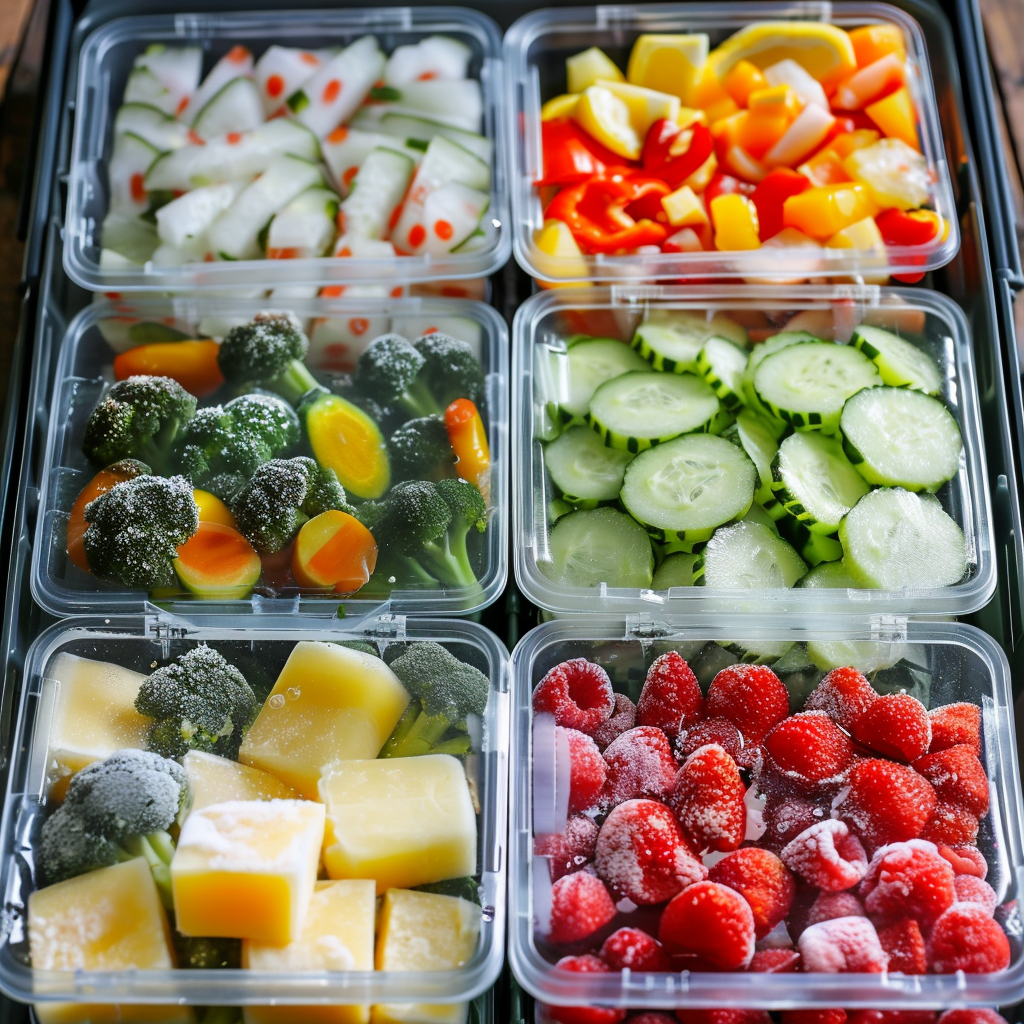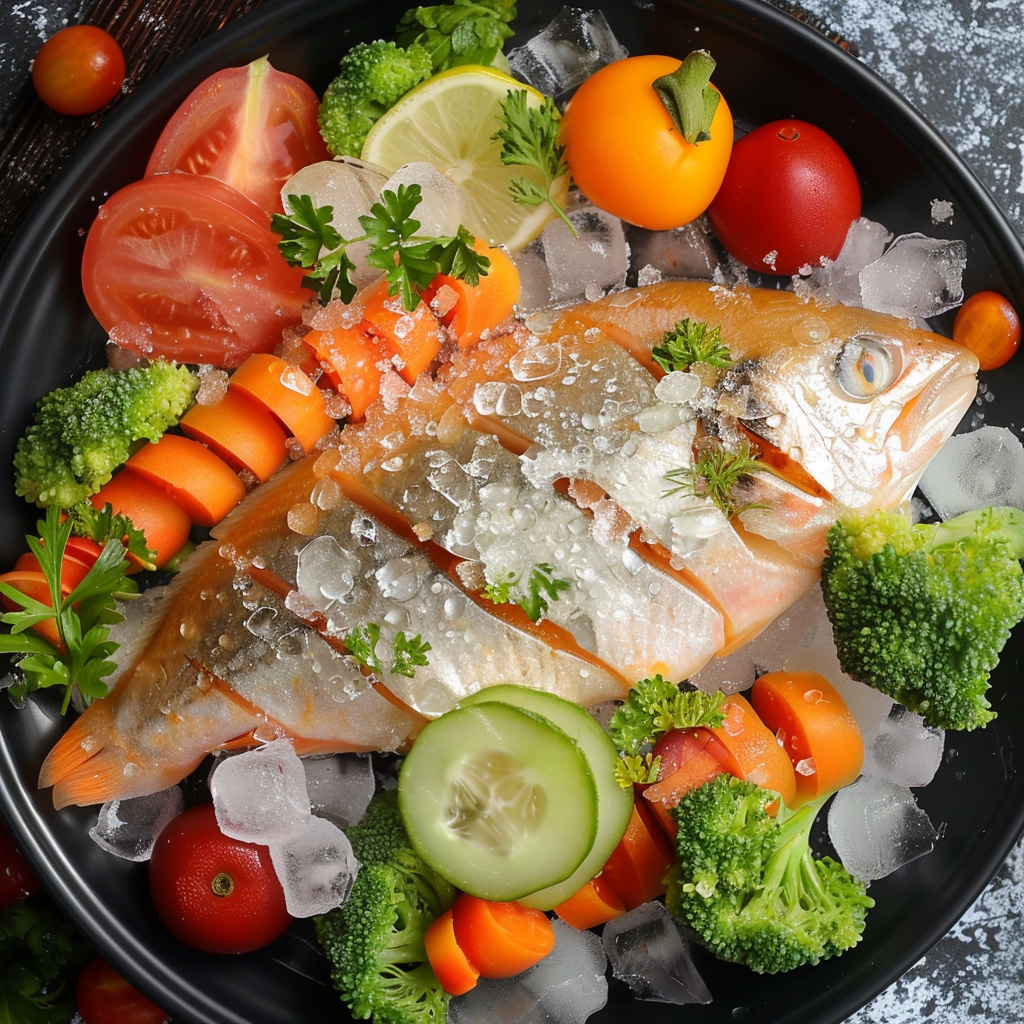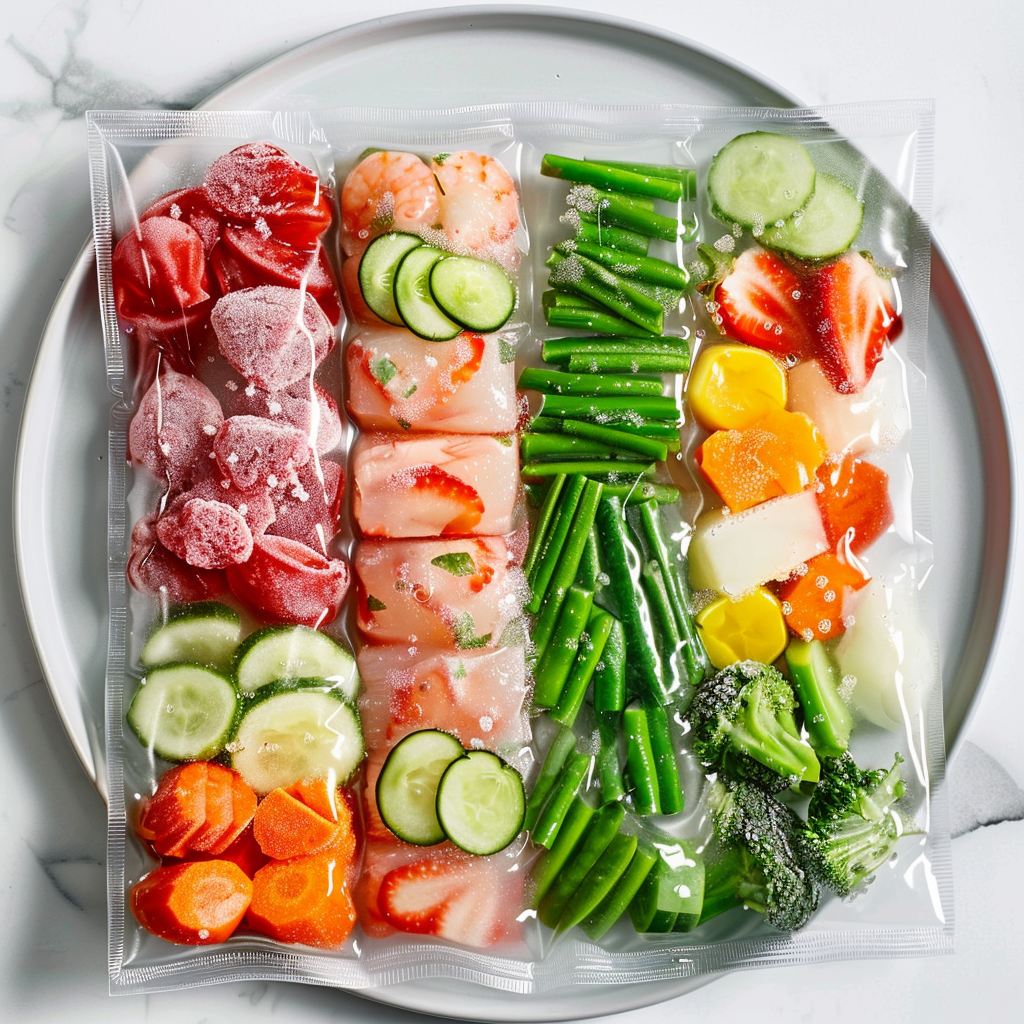Introduction
Have you ever wondered, “Can I cook frozen food without defrosting?” The answer is yes! Cooking frozen food without defrosting can save time and maintain the food’s quality if done correctly. In this guide, we’ll explore various methods, safety tips, and expert advice to help you cook frozen meals safely and efficiently.
What is Frozen Food?
Frozen food refers to food items that have been subjected to a rapid freezing process to preserve their freshness, nutritional value, and flavor. This method of preservation helps extend the shelf life of food and allows for convenient storage and preparation.
The Popularity of Frozen Food
Frozen food has become increasingly popular due to its convenience, variety, and cost-effectiveness. With busy lifestyles, many people find frozen food a quick and easy solution for meal preparation. Additionally, advancements in freezing technology have improved the quality and taste of frozen products, further boosting their popularity.
Benefits of Using Frozen Food
- Convenience: Frozen foods are easy to store and can be kept for long periods without spoiling, making meal planning and preparation more flexible.
- Nutritional Value: Freezing preserves the nutritional content of food, often retaining more vitamins and minerals compared to fresh produce that may lose nutrients over time.
- Variety: A wide range of frozen food products is available, including fruits, vegetables, meats, seafood, and ready-to-eat meals, providing diverse options for consumers.
- Reduced Waste: Since frozen food has a longer shelf life, it can help reduce food waste by allowing people to use only what they need and save the rest for later.
Challenges of Cooking Frozen Food
- Texture Changes: Freezing and thawing can alter the texture of some foods, making them less appealing or more difficult to cook.
- Cooking Time: Cooking frozen food can take longer compared to fresh or thawed items, requiring adjustments to cooking methods and times.
- Quality Concerns: Improper storage or freezing techniques can lead to freezer burn or loss of flavor, affecting the overall quality of the food.
Can You Cook Frozen Food Without Defrosting?

Many people ask, “Can I cook frozen food without defrosting?” and the answer is yes. You can cook many types of frozen food without defrosting, provided you follow some essential guidelines to ensure safety and quality.
Common Myths and Misconceptions to cooking frozen food without defrosting
Many believe that all frozen food must be defrosted before cooking to ensure even cooking and safety. However, this is not always the case. Some foods can be cooked directly from their frozen state, and doing so can be safe and convenient.
Is It Safe to Cook Frozen Food Without Defrosting?
Yes, it is generally safe to cook many types of frozen food without defrosting, provided the food is cooked thoroughly to a safe internal temperature. Cooking from frozen can also help maintain the food’s texture and flavor in some cases.
Foods You Can Cook from Frozen
- Meat and Poultry: Certain cuts of meat and poultry can be cooked directly from frozen. This includes smaller cuts like chicken breasts, pork chops, and ground meat. Ensure the meat reaches the appropriate internal temperature to guarantee it is fully cooked.
- Fish and Seafood: Fish fillets, shrimp, and other seafood can often be cooked from frozen. These items typically cook quickly and can be prepared using various methods such as baking, grilling, or sautéing.
- Vegetables: Frozen vegetables are convenient to cook directly from their frozen state. They can be steamed, microwaved, or added to soups and stews without the need for defrosting.
- Pre-cooked Meals: Many pre-cooked frozen meals are designed to be cooked directly from frozen. These include items like lasagna, casseroles, and ready-to-eat dishes. Follow the package instructions for best results.
Foods You Should Not Cook from Frozen
- Large Cuts of Meat: Large cuts of meat, such as roasts or whole chickens, should be thawed before cooking. Cooking these items from frozen can result in uneven cooking, with the exterior becoming overcooked while the interior remains undercooked.
- Certain Baked Goods: Some baked goods, like certain doughs and pastries, may not cook properly from frozen. Thawing these items before baking helps ensure even cooking and optimal texture.
While many frozen foods can be safely and conveniently cooked without defrosting, it’s essential to know which items are suitable for this method and which ones require thawing to achieve the best results. Now that you know the answer to “Can I cook frozen food without defrosting?” try these tips and enjoy quick, delicious meals without the hassle of defrosting.
Methods for Cooking Frozen Food Without Defrosting

Oven Cooking
Benefits of Using the Oven
- Even Cooking: The oven provides consistent heat, ensuring that food cooks evenly.
- Versatility: Suitable for a wide range of frozen foods, including meats, vegetables, and baked goods.
- Retained Moisture: Helps retain the moisture and flavor of the food.
Steps to cook frozen food without defrostingin in the Oven
- Preheat the Oven: Set the oven to the recommended temperature, typically between 350°F (175°C) and 400°F (200°C), depending on the type of food.
- Prepare the Food: Place the frozen food on a baking sheet or in an oven-safe dish. Spread it out evenly to ensure proper heat distribution.
- Add Seasoning: If desired, add seasoning or sauces to enhance the flavor.
- Cover the Dish: For certain foods, covering the dish with aluminum foil can help prevent drying out.
- Cook According to Instructions: Follow the package instructions for cooking times, adding extra time if needed. Check for doneness by using a meat thermometer or ensuring the food is heated through.
Stove Cooking
Benefits of Using the Stove
- Quick Heating: The stove allows for fast cooking, especially for smaller items.
- Control: Offers better control over the cooking process with adjustable heat settings.
- Versatility: Ideal for sautéing, boiling, and pan-frying.
Steps to Cook Frozen Food on the Stove
- Preheat the Pan: Heat a skillet or saucepan over medium heat and add a small amount of oil or butter.
- Add the Frozen Food: Place the frozen food directly into the pan. Break up any large pieces if necessary.
- Stir Frequently: Stir the food regularly to ensure even cooking and prevent sticking.
- Adjust Heat as Needed: If the food starts to cook too quickly or burn, reduce the heat.
- Check for Doneness: Cook until the food reaches the appropriate internal temperature and is evenly heated.
Microwave Cooking
Benefits of Using the Microwave
- Speed: Microwaves cook food quickly, making them ideal for busy schedules.
- Convenience: Easy to use with minimal cleanup required.
- Energy Efficient: Uses less energy compared to ovens and stovetops.
Steps to Cook Frozen Food in the Microwave
- Place in a Microwave-Safe Dish: Arrange the frozen food in a microwave-safe container, spreading it out evenly.
- Cover the Dish: Use a microwave-safe lid or plastic wrap to cover the dish, leaving a small vent for steam to escape.
- Set the Power Level: Adjust the microwave to medium or high power, depending on the type of food.
- Cook in Intervals: Cook the food in short intervals (e.g., 2-3 minutes), stirring or turning the food between intervals to ensure even heating.
- Check for Doneness: Continue microwaving until the food is thoroughly heated, checking for doneness with a thermometer or by tasting.
Air Fryer Cooking
Benefits of Using the Air Fryer
- Crispy Texture: Air fryers provide a crispy finish without the need for excessive oil.
- Fast Cooking: Cooks food quickly and evenly.
- Healthier Option: Requires less oil, making it a healthier cooking method.
Steps to Cook Frozen Food in the Air Fryer
- Preheat the Air Fryer: Adjust the air fryer to the suggested temperature, typically around 375°F (190°C).
- Arrange the Food: Place the frozen food in the air fryer basket in a single layer.
- Shake the Basket: Halfway through the cooking time, shake the basket to ensure even cooking.
- Adjust Cooking Time: Follow the package instructions for cooking times, adding extra time if needed.
- Check for Doneness: Ensure the food is cooked through and has reached a safe internal temperature.
Slow Cooker Cooking
Benefits of Using the Slow Cooker
- Hands-Off Cooking: Allows for unattended cooking, perfect for busy days.
- Tender Results: Produces tender, flavorful dishes, especially for meats and stews.
- Energy Efficient: Uses less energy compared to ovens and stovetops.
Steps for cooking frozen food without defrosting in the Slow Cooker
- Add the Frozen Food: Place the frozen food directly into the slow cooker.
- Add Liquid: Include a small amount of liquid (e.g., broth, water, or sauce) to prevent sticking and promote even cooking.
- Set the Temperature: Choose the appropriate setting (low or high) based on the recipe and the type of food.
- Cook for the Recommended Time: Follow the recipe instructions for cooking times, typically 4-6 hours on high or 8-10 hours on low.
- Check for Doneness: Ensure the food is cooked thoroughly and has reached a safe internal temperature before serving.
By using these methods, you can efficiently and safely cook a variety of frozen foods without the need for defrosting, making meal preparation more convenient and time-saving.
Safety Tips and Best Practices
Ensuring Even Cooking
- Preheat Appliances: Always preheat your oven, air fryer, or skillet to the appropriate temperature before adding frozen food. This helps ensure even cooking from the start.
- Stir and Rotate: For methods like microwaving and stovetop cooking, stir or rotate the food periodically to promote even heat distribution.
- Use Proper Tools: Utilize tools like baking sheets, air fryer baskets, and slow cooker inserts designed to facilitate even cooking and heat circulation.
Preventing Cross-Contamination
- Separate Raw and Cooked Foods: Keep raw frozen foods separate from ready-to-eat or cooked foods to prevent cross-contamination.
- Clean Utensils and Surfaces: Wash hands, utensils, and surfaces thoroughly after handling frozen raw foods, especially meats and poultry.
- Use Separate Cutting Boards: Use different cutting boards for raw meats and other foods to avoid cross-contamination.
Proper Internal Temperature
- Know the Safe Temperatures: Different types of food have specific safe internal temperatures. For example, poultry should reach 165°F (74°C), while most meats should reach 145°F (63°C) to 160°F (71°C).
- Check Multiple Spots: When cooking large or thick items, check the internal temperature in multiple places to ensure the entire piece is properly cooked.
- Allow Resting Time: Some foods, particularly meats, benefit from resting after cooking to ensure even temperature distribution and juiciness.
Using a Meat Thermometer
- Insert Properly: Insert the thermometer into the thickest part of the meat, avoiding bone and fat for the most accurate reading.
- Digital Thermometers: Use a digital meat thermometer for quick and precise readings.
- Calibrate Regularly: Ensure your thermometer is accurate by calibrating it according to the manufacturer’s instructions.
Expert Insights
Quotes from Culinary Experts
- Chef Julia Simmons: “Cooking frozen food directly can save time and often preserves the food’s texture better than defrosting. Just be sure to keep a close watch on the internal temperature.”
- Chef Marco Ruiz: “Using an air fryer for frozen food is a game-changer. It keeps the food crispy and cooks it evenly without the extra oil.”
Advice from Nutritionists
- Nutritionist Sarah Lee: “Frozen vegetables are a fantastic option because they retain most of their nutrients. Don’t be afraid to cook them directly from frozen; just ensure they are heated through completely.”
- Nutritionist James Carter: “When cooking frozen meats, it’s essential to reach the proper internal temperature to avoid any foodborne illnesses. Investing in a good meat thermometer is a small step for significant peace of mind.”
By following these safety tips and best practices, and taking advantage of expert insights, you can cook frozen foods effectively and safely, ensuring delicious and nutritious meals every time.

FAQs about cooking frozen food without defrosting
What happens if you cook frozen food without defrosting?
Cooking frozen food without defrosting can result in longer cooking times and sometimes uneven cooking. However, many foods can be safely cooked from frozen if you follow proper cooking guidelines and ensure the food reaches a safe internal temperature.
Is thawing of food really necessary before cooking?
Thawing is not always necessary before cooking. Many foods, such as vegetables, pre-cooked meals, and certain cuts of meat and seafood, can be cooked directly from frozen. Thawing is mainly recommended for large cuts of meat and certain baked goods to ensure even cooking.
Does frozen food need to be defrosted?
Not all frozen food needs to be defrosted. Foods like fish fillets, chicken breasts, vegetables, and pre-cooked meals can be cooked directly from frozen. However, large items like whole poultry or roasts should be defrosted for even cooking.
How do you cook frozen meat without defrosting it?
To cook frozen meat without defrosting:
- Use the Oven: Preheat the oven, place the meat on a baking sheet, and cook it at a higher temperature for a longer period.
- Use the Stove: Sear the meat in a hot pan to brown the outside, then lower the heat and cook until done.
- Use an Air Fryer: Preheat the air fryer and cook the meat, shaking the basket halfway through.
- Check the Internal Temperature: Ensure the meat reaches the appropriate internal temperature for safety.
What are the dangers of not defrosting food properly?
Improper defrosting can lead to uneven cooking, where the exterior is cooked while the interior remains undercooked, posing a risk of foodborne illnesses. Additionally, improper defrosting can affect the texture and taste of the food.
What is the impact of not defrosting food?
Not defrosting food can result in longer cooking times and potentially uneven cooking. However, with proper techniques, you can cook many frozen foods safely and maintain their quality. Always ensure the food reaches a safe internal temperature to avoid health risks.
Conclusion
Summary of Key Points
- Many foods can be cooked directly from frozen without defrosting.
- Ensure even cooking and prevent cross-contamination by following safety tips.
- Use appropriate cooking methods and tools, like meat thermometers, to ensure food is cooked thoroughly.
- Expert insights emphasize the benefits and proper techniques for cooking frozen foods.
Encouragement to Try Cooking Frozen Food Without Defrosting
Cooking frozen food without defrosting can save time and maintain food quality. With the right methods and precautions, you can prepare delicious and safe meals quickly and efficiently.
Call to Action for Further Education
Explore different methods for cooking frozen foods and experiment with new recipes. Stay informed about food safety practices and use reliable resources to enhance your culinary skills. Try cooking frozen food without defrosting and enjoy the convenience and taste it offers!
